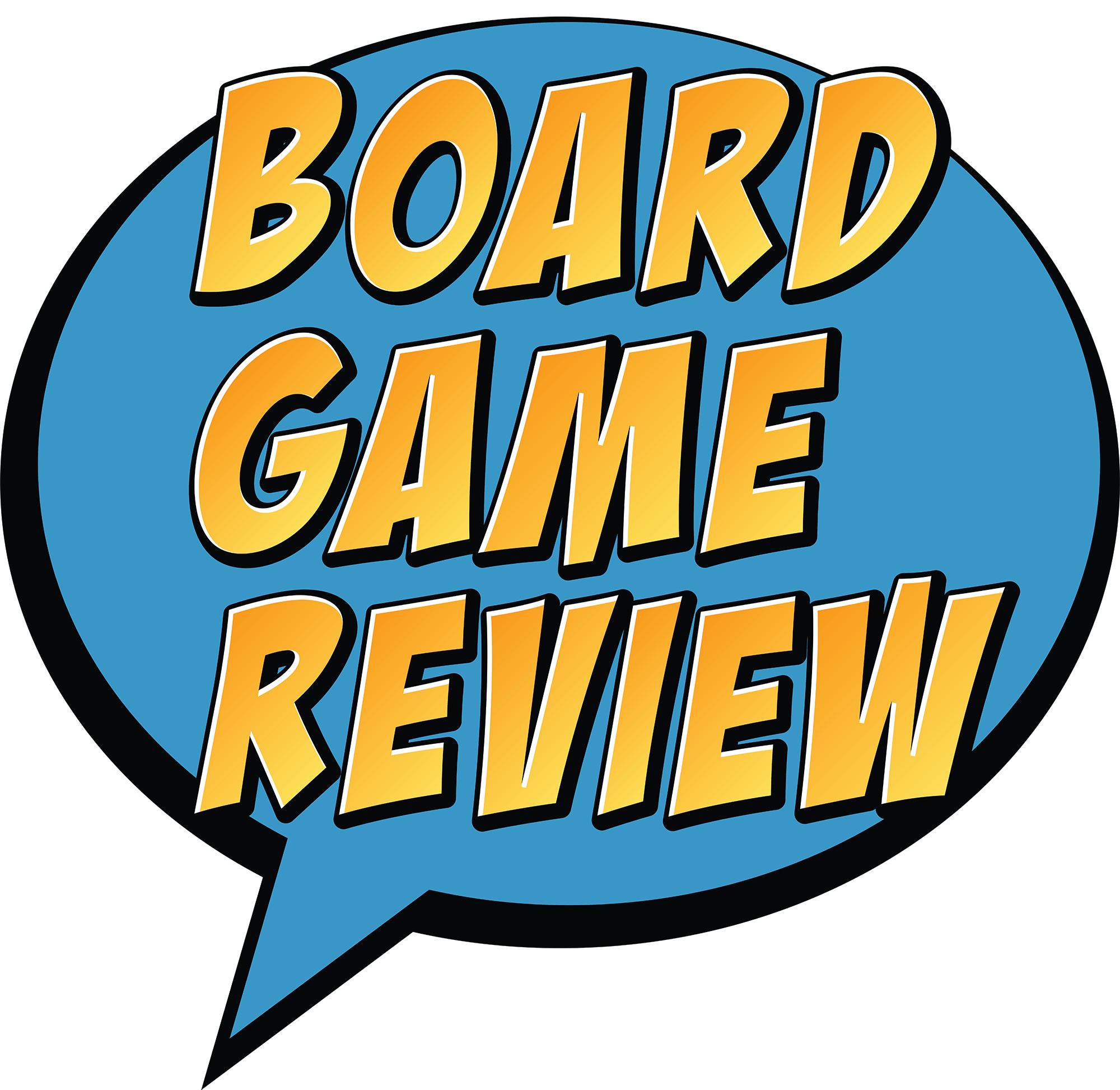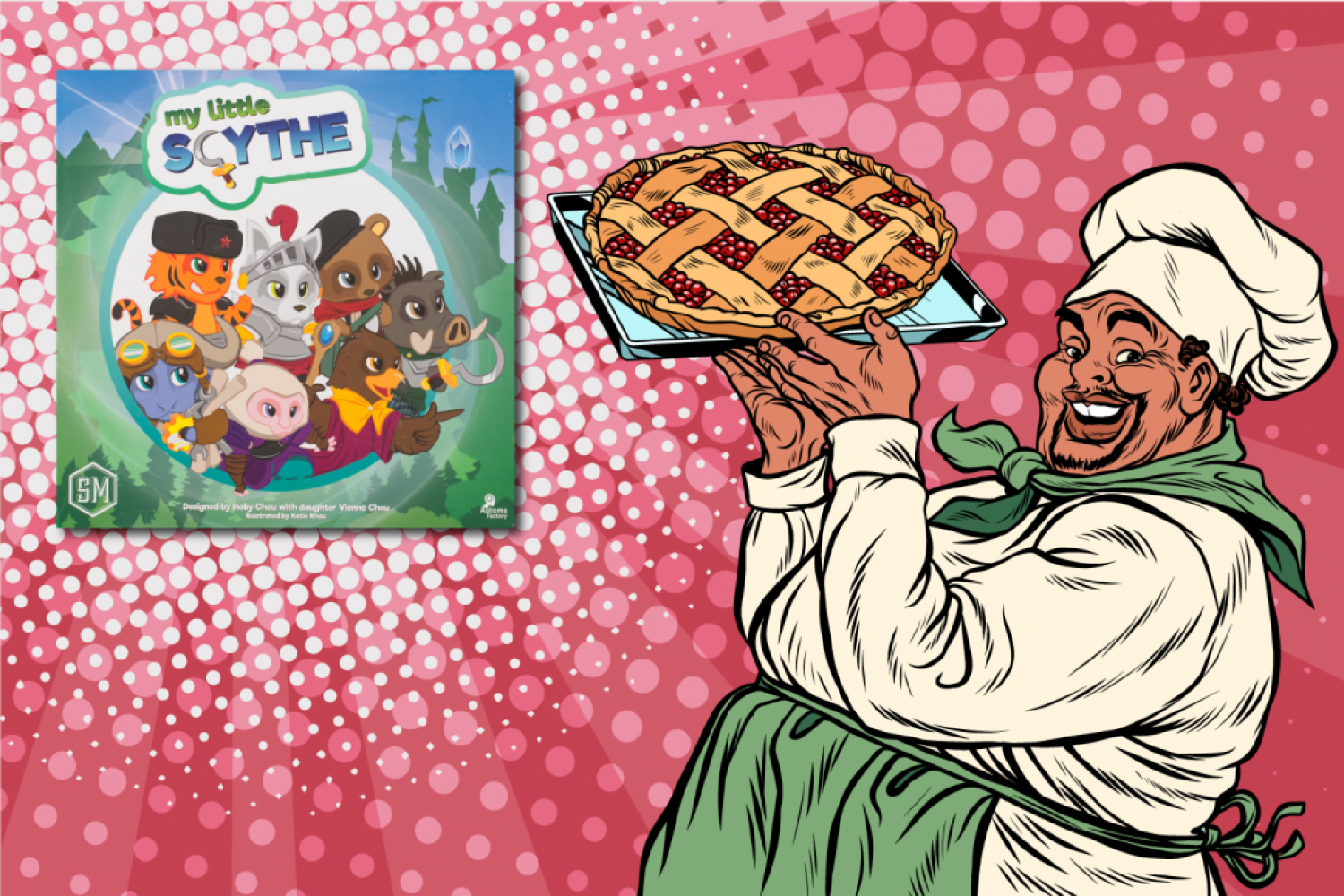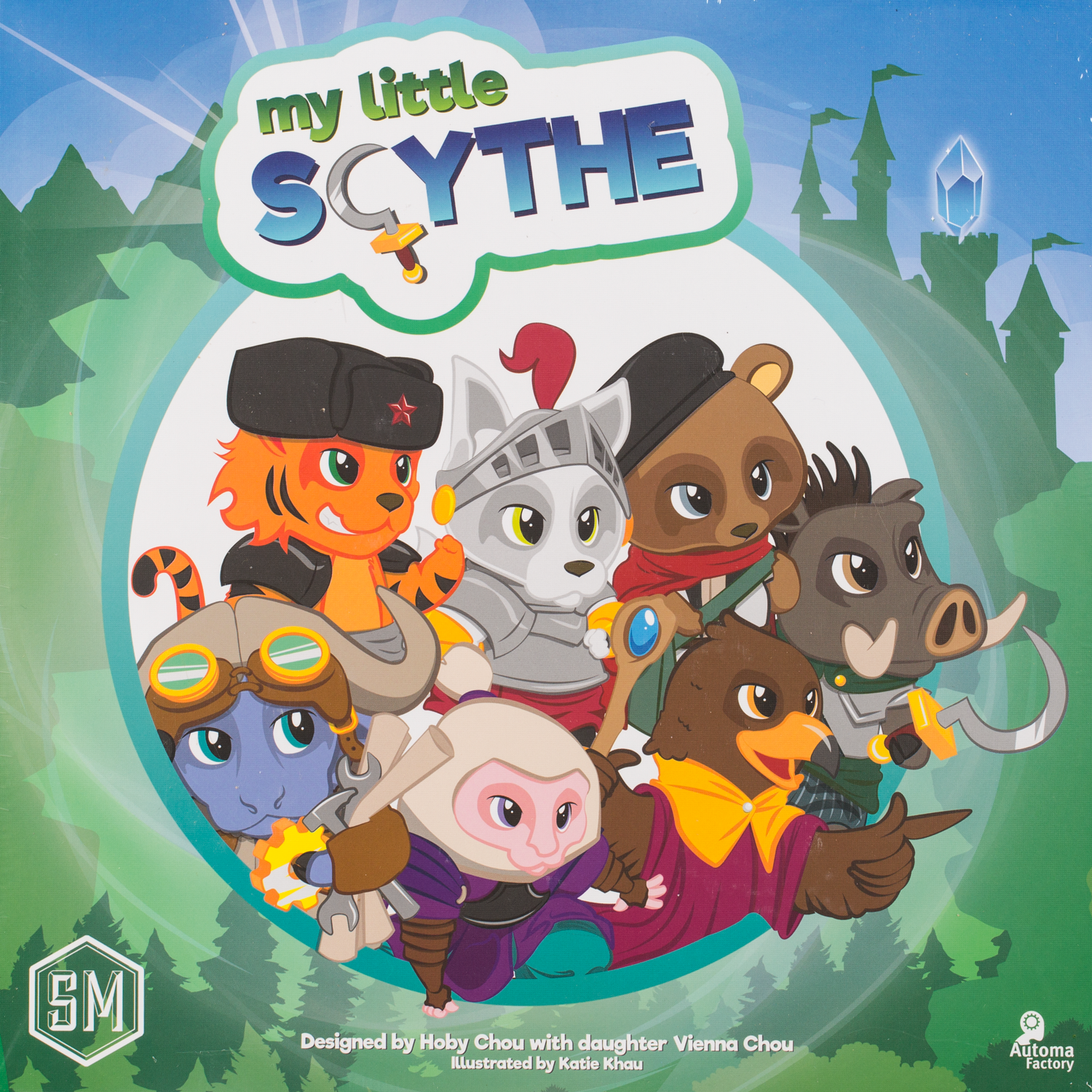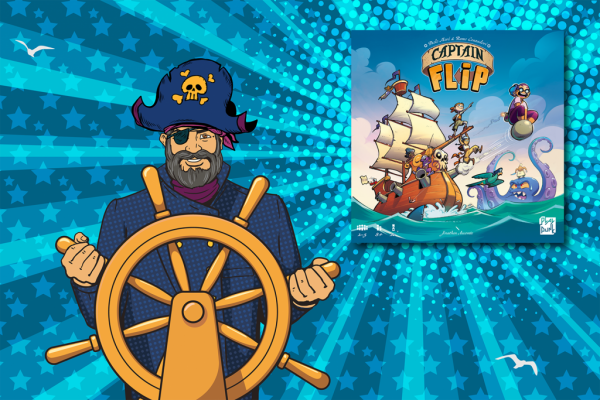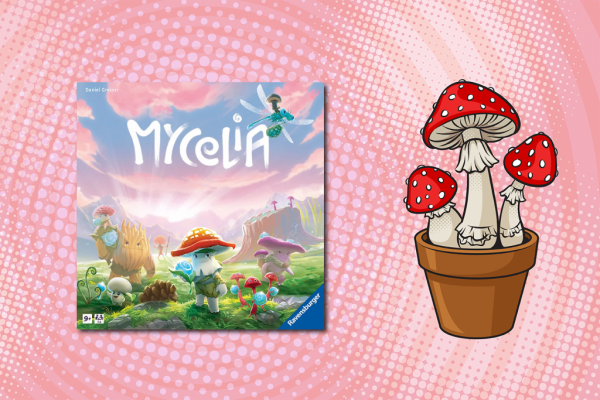My Little Scythe Review
Advert: My Little Scythe was gifted by Stonemaier Games, this has not affected our opinion.
There aren’t many family weight board games with incredible sculpted miniatures, GameTrayz inside and multiple routes to victory. Add into the mix, pie fights and Jamey Stegmaier’s brand and you can perhaps understand why I was genuinely excited to lift the lid on My Little Scythe from Stonemaier games.
So let’s go to the Kingdom of Pomme and check out the pips… or maybe just partake in the Harvest Festival.
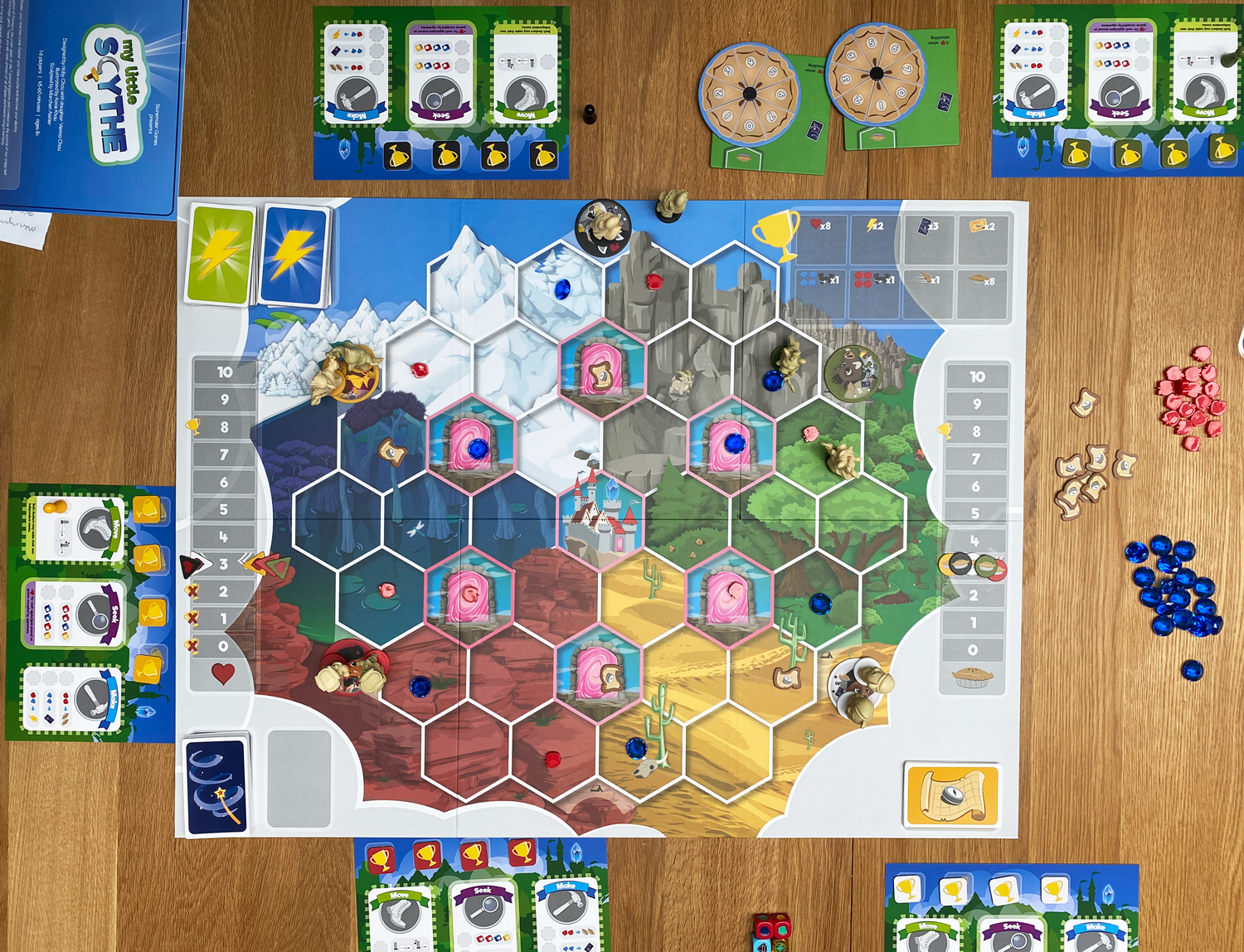
©boardgamereview.co.uk
Gameplay
Setup is very straightforward, with starting positions and gems dictated by the game, all you really need to decide is which colour faction to play.
All players start with two Seekers on a predetermined camp. The aim in the My Little Scythe tournament is to be the first realm to obtain four trophies. These are awarded every time you complete one of the eight objectives on offer. These range from winning a pie fight to delivering four gems to Castle Everfree in the middle of the board. Each objective can be completed by multiple players but the same player cannot earn a trophy for the same thing more than once.
On your turn you have a handful of actions available that you can use: Move, Seek and Make. These are identified on the individual player boards. ‘Move’ is self-explanatory, and allows you to move both Seekers two spaces each, or one space each if carrying gems and/or apples. ‘Seek’ allows you to roll some dice and scatter more gems, apples and quests across the board. ‘Make’ lets you exchange apples for pies, gems for a magic card, or an apple and a gem for an upgrade to your Move or Make abilities. Players can only perform one action on their turn and never the exact same option on the subsequent turn. You can however perform the alternate option for Seek or Make on your following turn.
Sprinkle that with a little bit of pie-fighting and quest-seeking. This give your opponents the option to beleaguer you along the way. That is pretty much a brief introduction to My Little Scythe’s gameplay.
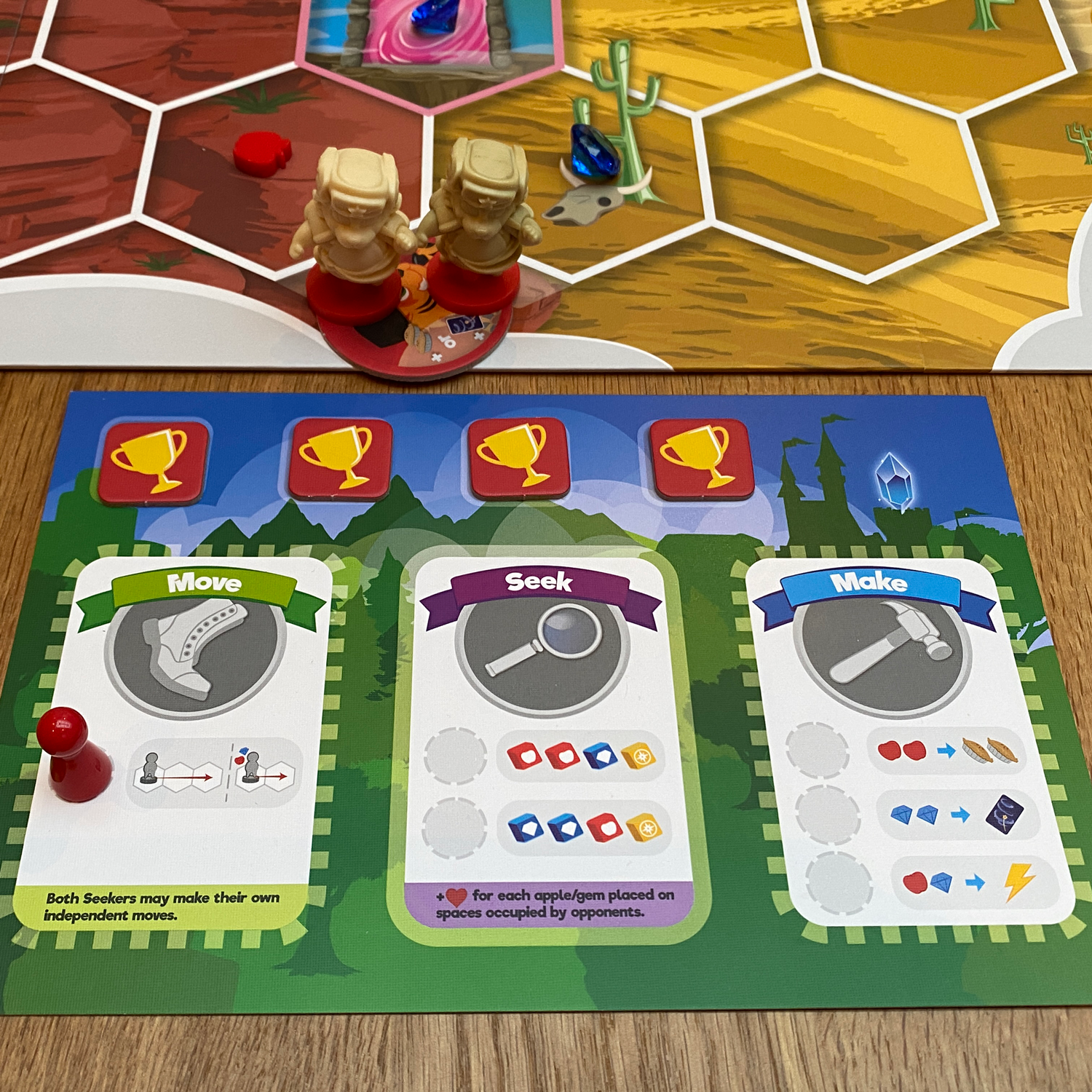
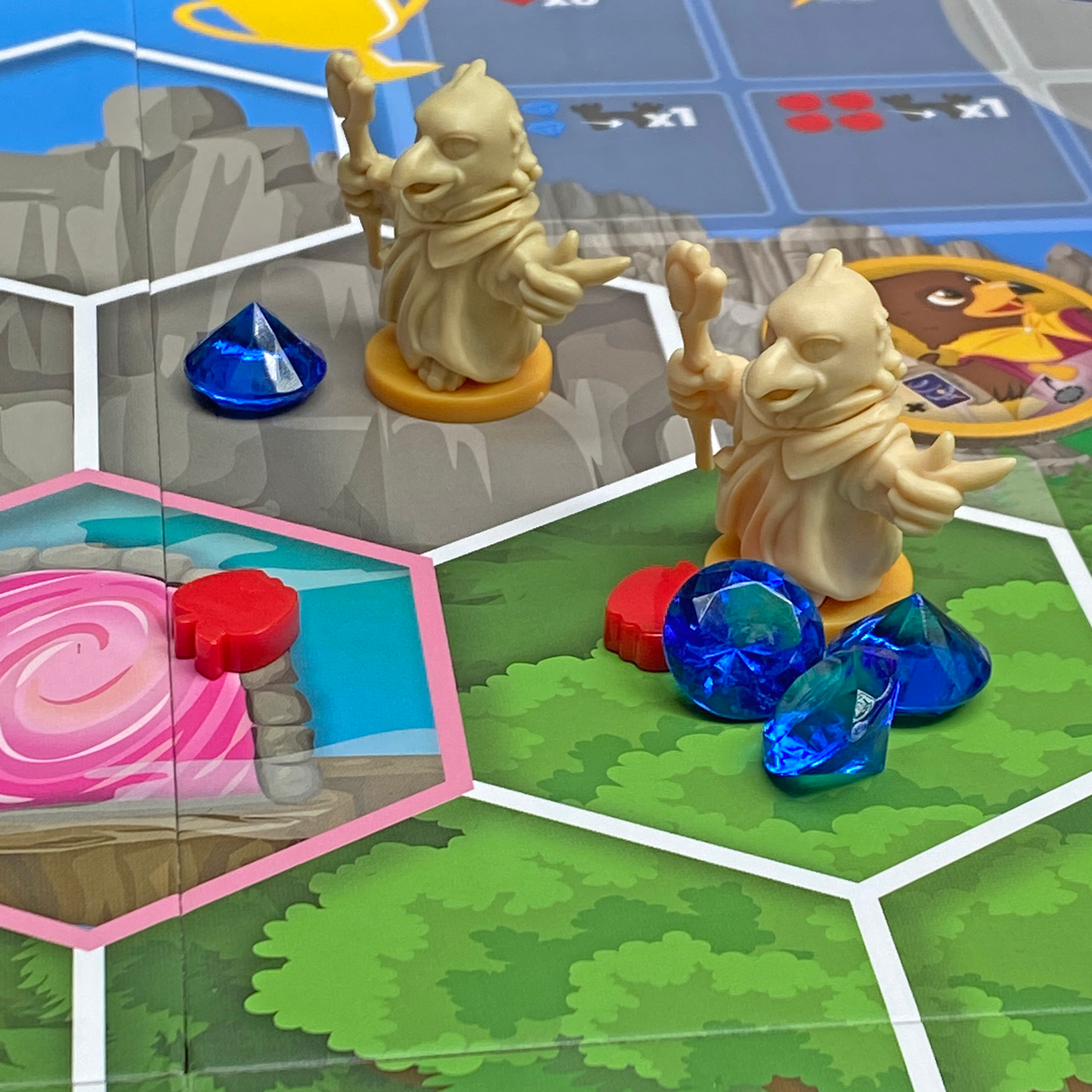
©boardgamereview.co.uk
What it’s like
Multiple routes to victory adds a lovely mix that younger players may not be used to in board games. Most players will start by upgrading their Move and Make tiles as this seems to be the easiest and best way of earning a trophy quickly and helping yourself going forward. After that, it is a free for all with some racing to collect gems to take to the castle and others seeking to gain friendship points.
A couple of the trophies are considerably easier to achieve than others. From experience delivering apples and gems is incredibly tricky in a four player or higher game. This is because as soon as you have gathered the resources you become a target that all other players want to pie-fight.
You will notice, movement is restricted. This can be frustrating but encourages forward thinking and working towards more than one trophy at a time.
That may all sound a bit more complex than perhaps some will be used to, but seasoned board gamers would take it all in their stride and think of it as fairly lightweight.
This game changes depending on player count. For me it doesn’t particularly shine at two players, and although it is great that it can play up to five or six players, there is a bit too much down time between turns, especially for some kids. With 3 or 4 it shines brightly.
Games will often end with a tie-break, giving that feeling that it was really close for all involved, which isn’t a negative, it’s just how it plays out.
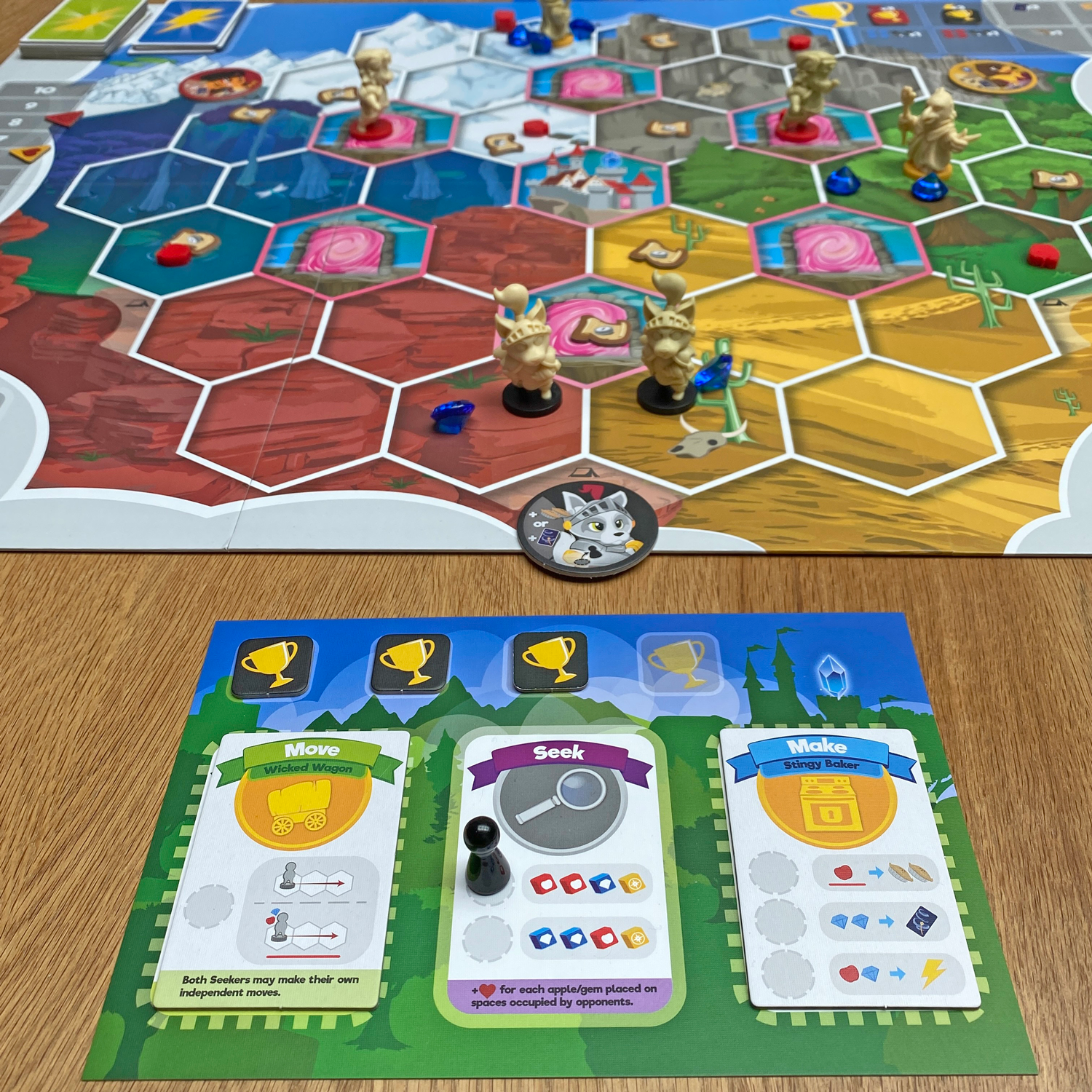
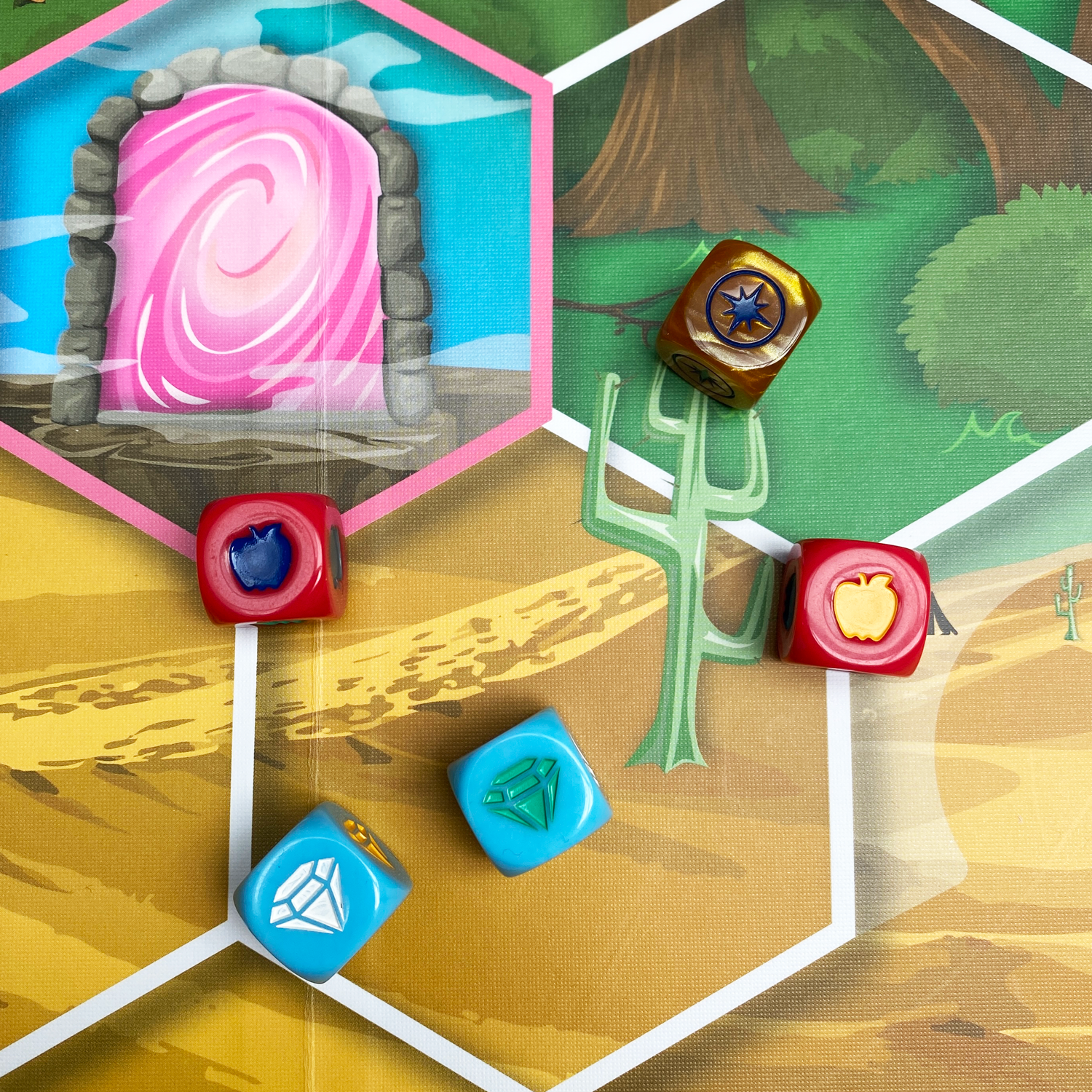
©boardgamereview.co.uk
Take that
The game has some take that. I’m not saying Gary Barlow is going to make an appearance, I mean that you do attack one another during the game. Some people aren’t keen on take that, which I understand. It can evoke nuclear fallout at the gaming table, especially with young players. However, in My Little Scythe, it works very cleverly and only really comes to the fore with pie-fights and quests. So it shouldn’t really put you off. Let me explain…
Pie-fights in My Little Scythe never feel malicious. Winning a pie-fight is one of the easier trophies to acquire and so it feels actively encouraged. Because everyone is doing it, pie-fights don’t feel mean. Even if you lose, you get more pies or a magic card as a benefit so it never feels like a huge defeat, more an annoyance. Pie-fights are played out on a spinner, where each player dedicates a number of the pies they have accumulated to the battle. This can be boosted by magic cards and, when revealed, most pies thrown wins!
Gaining two quests is another way of gaining a trophy. Each quest has a be nice option, a be mean option or a pass option. The be nice option has no take that and usually gives you a one-off benefit, however it usually requires a form of payment that you may not have. The be mean option allows you to steal something from an opponent, but usually at a cost for you. This karma approach stops it feeling vindictive as ultimately you are both losing something.
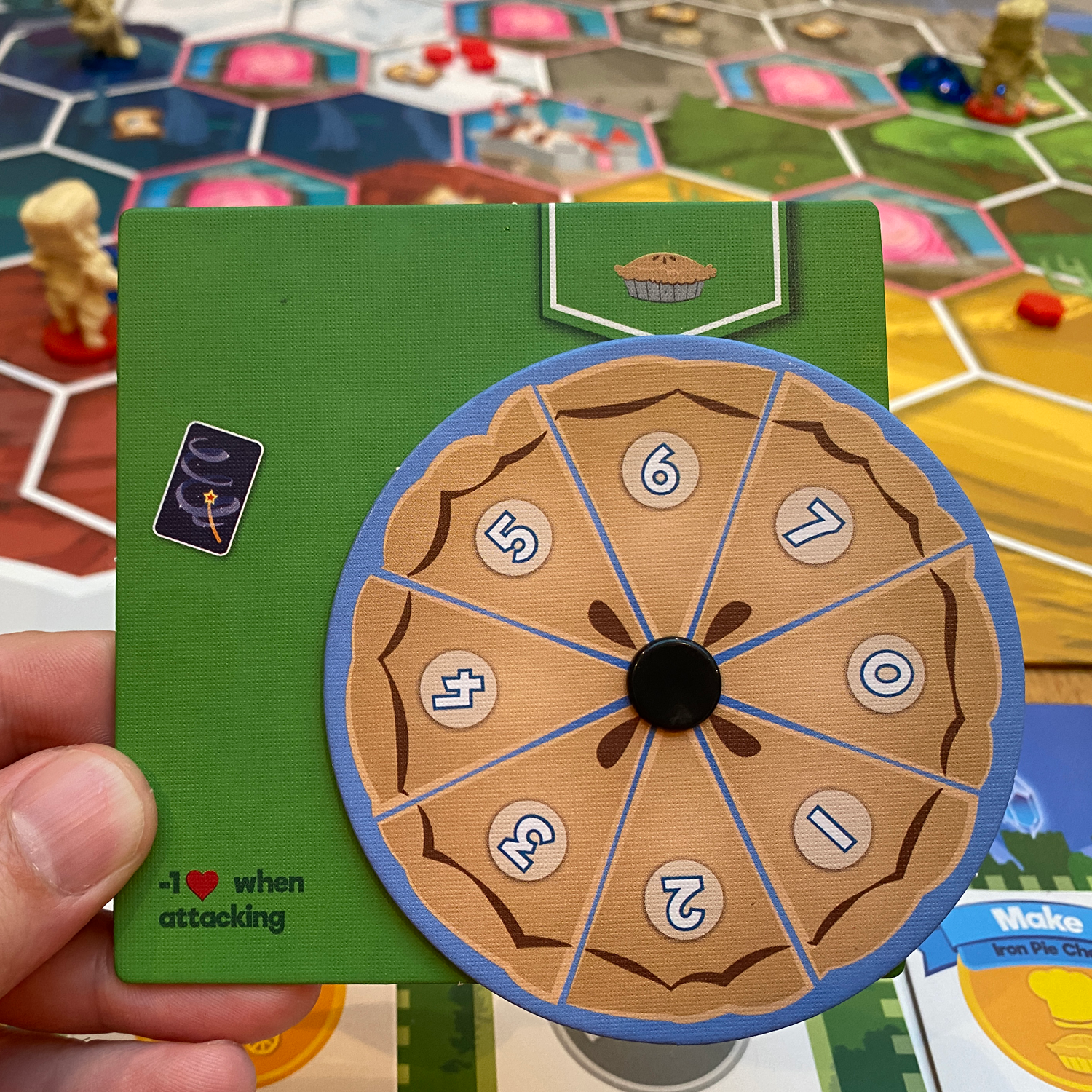

©boardgamereview.co.uk
Solo variant
I keep letting reader’s of my reviews down on solo gaming opinions. For that I am sorry. If ever I have the time or the inclination to play this on my own I will add my experience here, but generally Stonemaier Games have a well-respected solo mode to all their games.
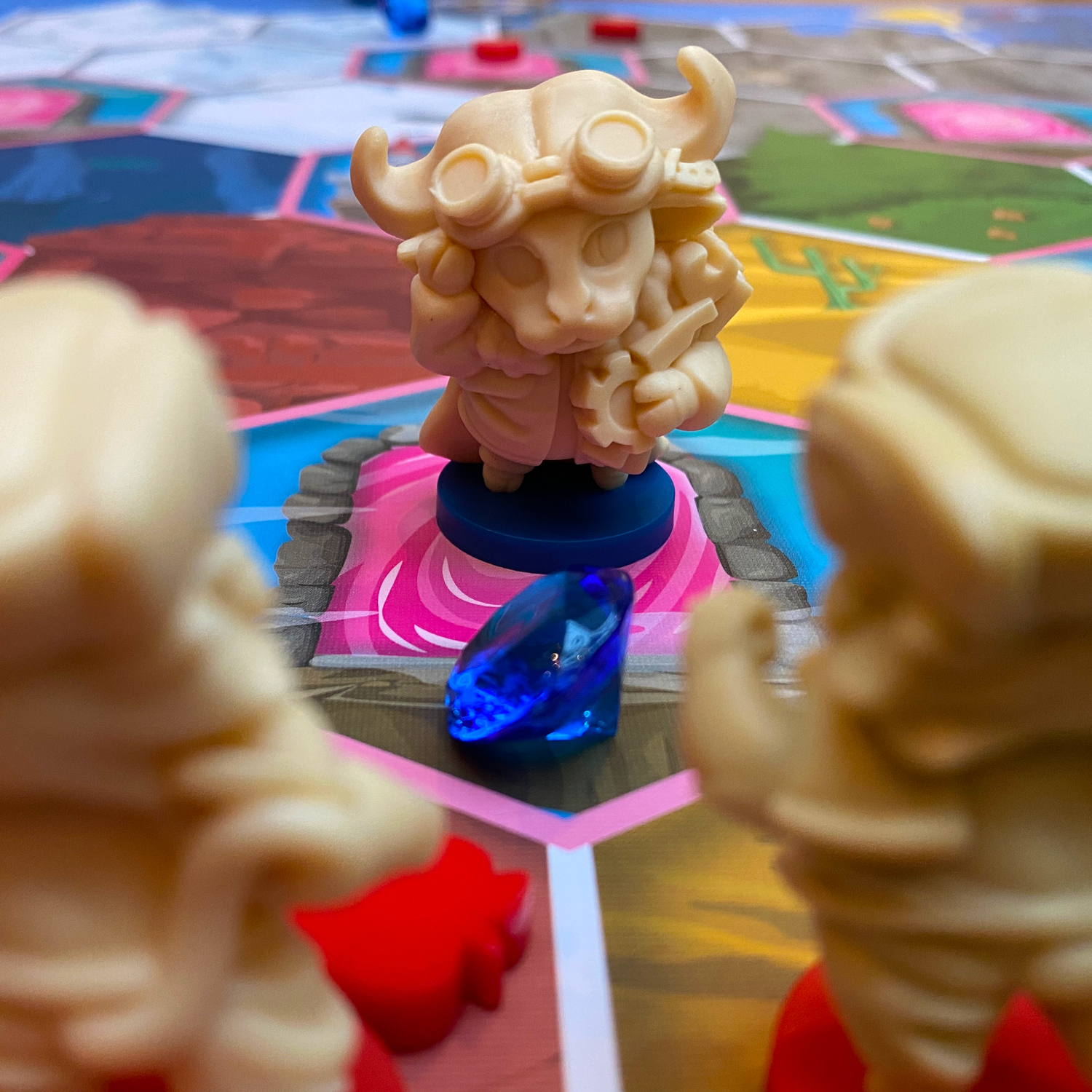
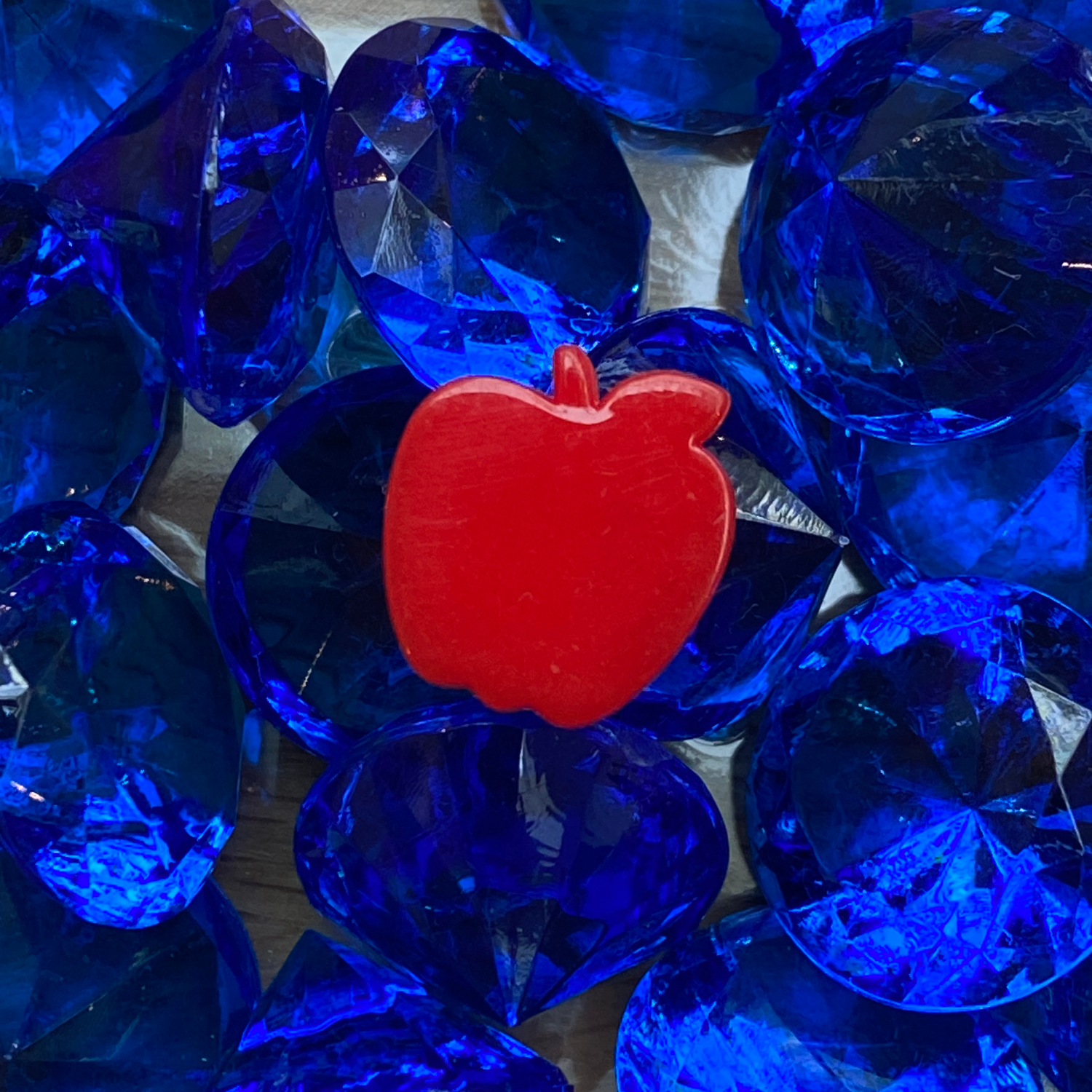
©boardgamereview.co.uk
Table Presence
For a board game that targets the family weight the components are phenomenal. Allow me to elaborate on that…
The My Little Scythe board is big. It is so big that the arms of children won’t be able to reach across it. That’s not a negative, all players have an area they control, whether that be the pie track or the friendship to place apples on certain terrains. The board is really colourful but with a lovely muted palette for each different region. The board provides a lovely setting for the game. It is a real treat to have this enormous board as the backdrop.
The Seekers are fabulously sculpted little minis in two tones. They are crying out to be painted and if only I had more time, painting them would be high up my ‘To Do’ list. As I barely have enough time to mow the lawn, they will stay as they are with their coloured bases as an identifier for the foreseeable future. A painting guide is included though if your lawn is neatly trimmed!
The cards are good and tell you through words and iconography what they do without ambiguity. The pie fight spinners do a great job, although setting them under the table is encouraged, as adding a magic card can drastically change what your opponent may do.
If you haven’t gone “that is phenomenal” yet, don’t gloss over the GameTrayz inside. These plastic storage containers make setting up the game and storing it away a delight.
For the pièce de résistance I offer up the sparkly blue gems and satisfyingly simple apple tokens. This is a stunning production.
The instructions are also clear and well-illustrated, although I must confess for this one I turned to Rodney and his How To Play video as I was learning it late at night. So if I have one reservation it is the rulebooks. They are written for board gamers and could’ve been simplified a bit more. I think a quick start where the rules step players through the opening turns to learn the game would have been really beneficial in making this game more accessible.
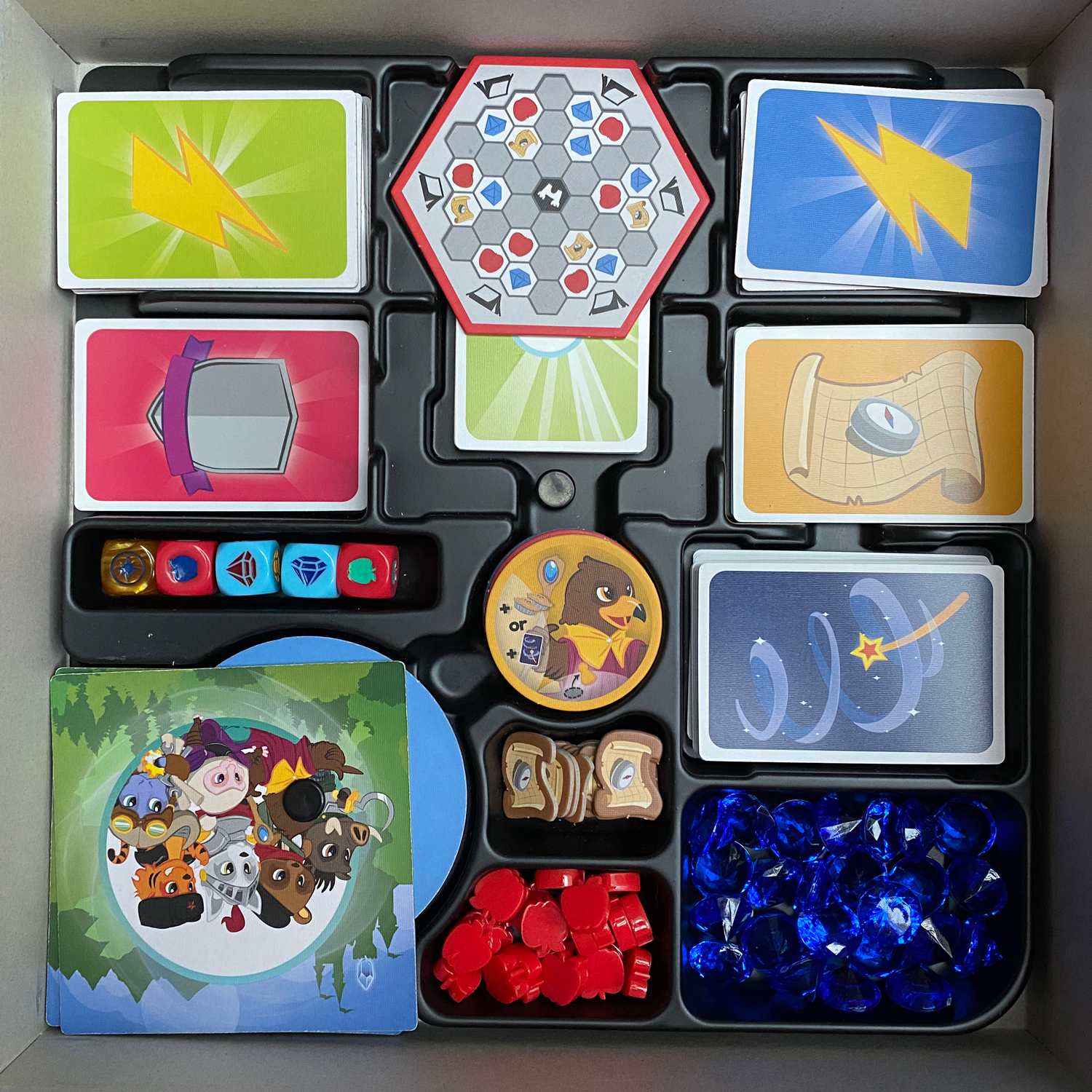
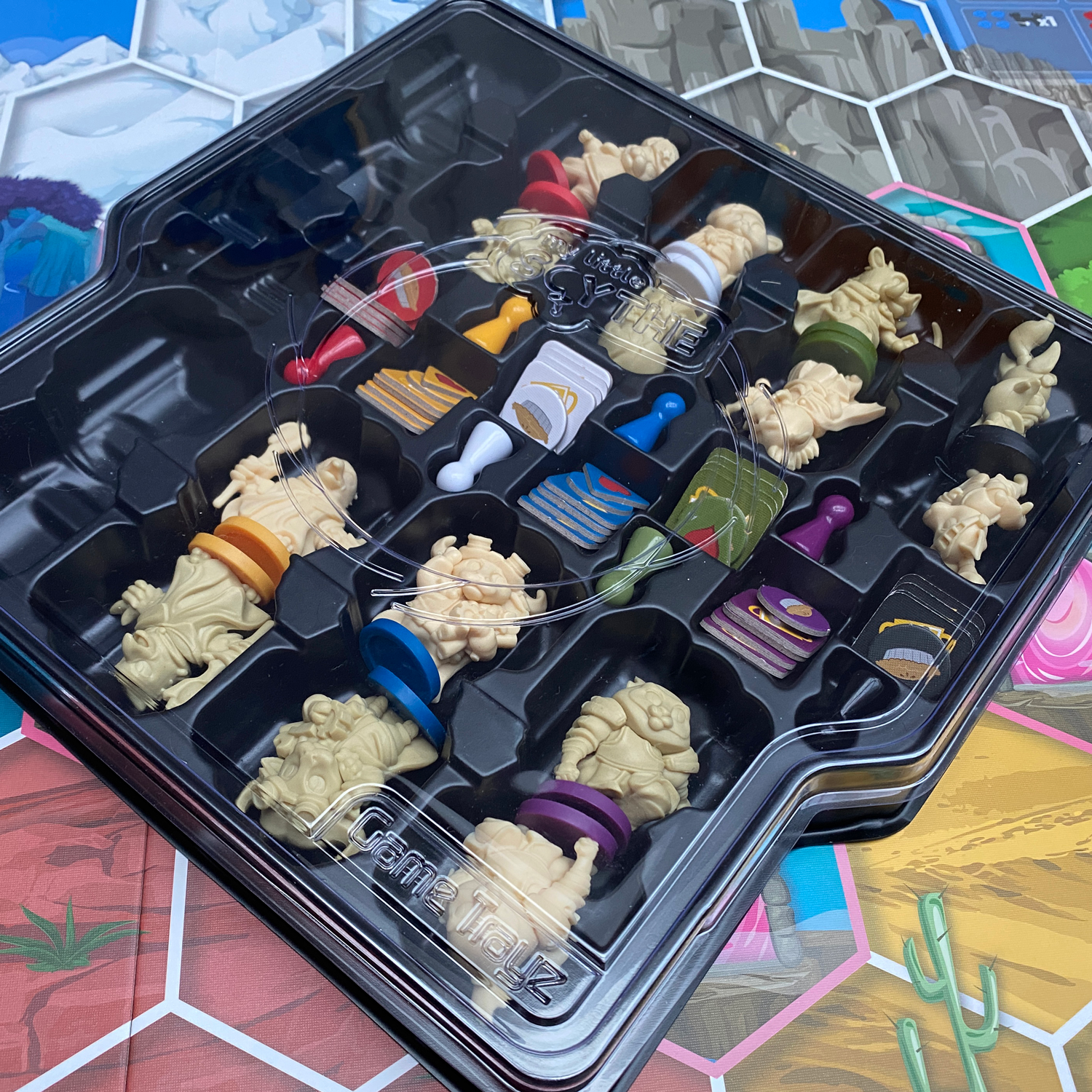
©boardgamereview.co.uk
What the kids thought
Harrison (13): it’s a good game, I enjoy it. I like the different options to win the game by getting trophies in different ways. The characters look awesome too.
George (10): I like how the characters are 3D. I enjoy the way you can mislead people during a pie fight and I love the artwork.
Max (6): I enjoy how you get different trophies. I also like the animal characters, they look really good.
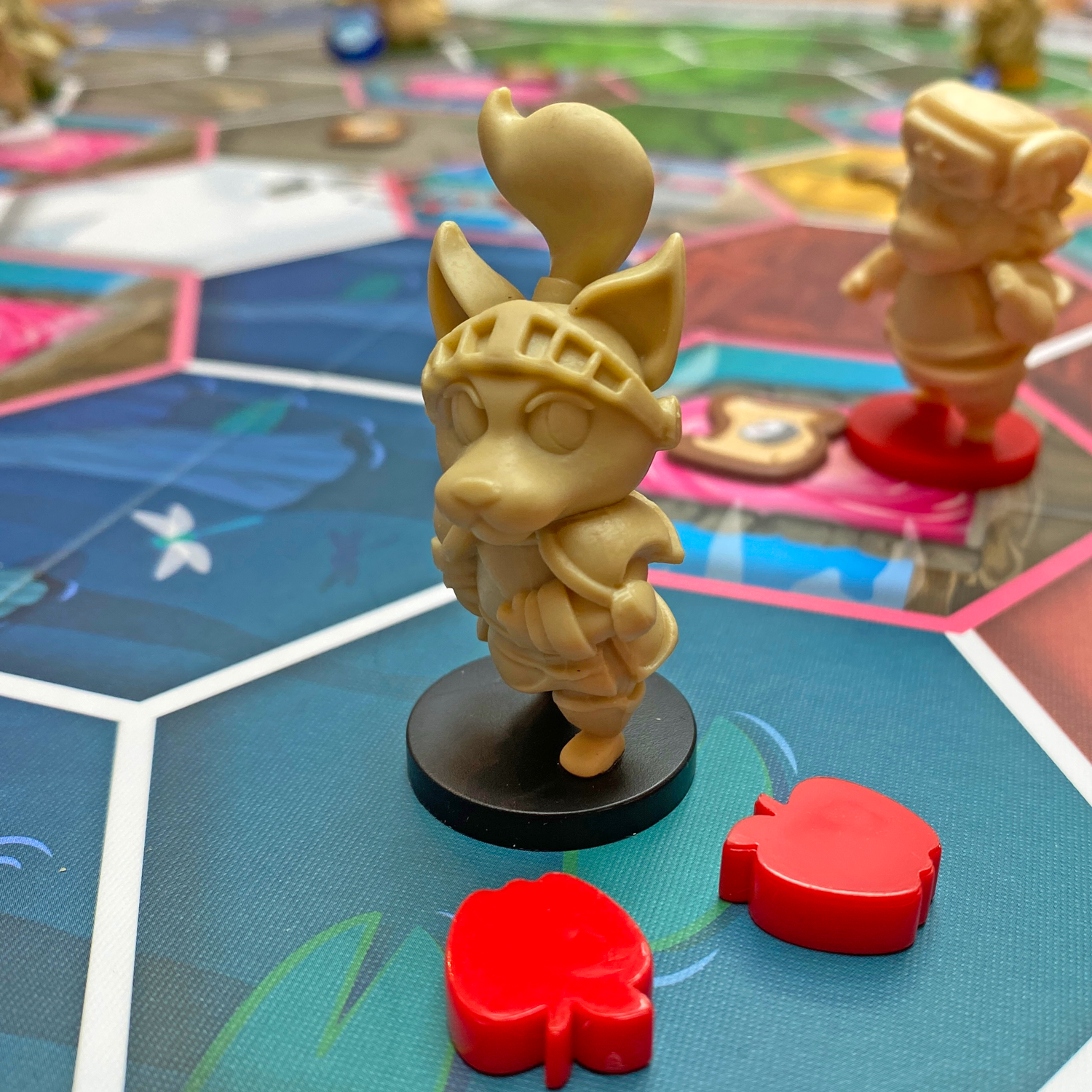
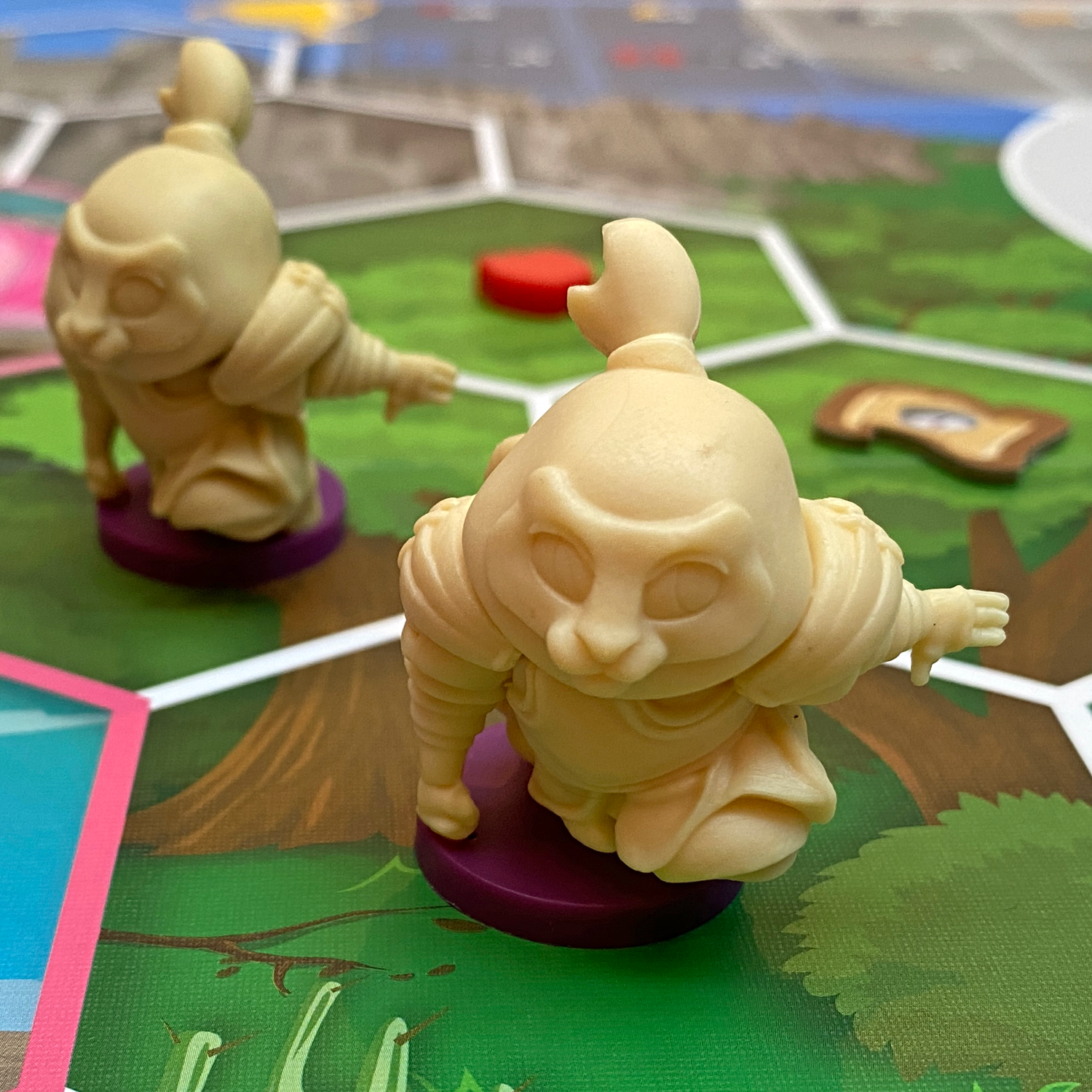
©boardgamereview.co.uk
Final thoughts on My Little Scythe
In terms of age, George (10) is about the perfect age for this board game, and I think enjoys it the most out of us all. Max (6) is probably a year off, as his concentration can wander slightly between turns. My Little Scythe doesn’t provide enough for me to play with adults only, with my boys though, it is brilliant. When playing with them, I still feel like I am playing an engaging and entertaining board game and not a kids game. I hasten to add, I rarely win! If I were their age, I would’ve sat for hours playing with the miniatures on the map, making up my own games. Perhaps I would’ve been more of a solo board gamer back then had such things existed!
I know I keep harping on about how good this game looks, but it really does have a stunning table presence and that is a big draw for me and my family. Just like a plate of food, the first mouthful is with your eyes, and this game makes me salivate!
This is an interesting weight of game. It fills a void that I didn’t really realise I had in my collection. By that, I mean this is a board game family’s family board game. Those new to the hobby may find it a bit too much to take on board, but if they persevere, and maybe watch a how to play video, they will have a cracking game to play that will open their eyes to how good family board games can be.
There is also the Pie in the Sky expansion available to add more to the game should you wish over time.
Key Facts
Number of players: 1 to 6
Board Game Review Recommended Age: 7+
Publisher’s Recommended Age: 8+
Playing Time: 50 minutes
Setting Up and Take Down Time: 6 minutes
Designers: Hoby Chou and Vienne Chou
Publisher: Stonemaier Games
RRP: £49.99
Summary
Overall, My Little Scythe is a stunning production and a very fun gaming experience. The table presence alone drew me and my children to the game like moths to a flame. We have all enjoyed our trips to the Kingdom of Pomme. This board game is certainly a hit in our household!
-
Artwork and Components
-
Complexity
-
Instructions
-
Interaction
-
Value for Money
Overall
Pros
- Stunning components
- Multiple Routes to Victory
- Fabulous quality
- Kids can be competitive
- Expansion available
Cons
- Some take that
- Despite being entry level, it could be tricky for some to learn
- You will want to paint the miniatures.
Need more games?
If you already own My Little Scythe and enjoy it, or are looking for other inspiration, you might also like these similar games:
- The Grimm Forest
- Rats to Riches
- Kitara
- Scythe
Buy My Little Scythe
If you want to buy My Little Scythe after reading our review click on one of our affiliate links below (note there has been no affiliate links until this point)
Reviewer’s Note
For clarity. We don’t get paid for our reviews. We were kindly gifted this game by Stonemaier Games, this has not affected our review in any way.
We may however earn a tincy wincy commission if you buy a game having clicked one of our affiliate links like the one above… this hopefully gives us a bit of pocket money towards hosting costs and new games to review!
As an Amazon Associate I earn from qualifying purchases.
Board Game Review is a brand ambassador for Out of Town Games.
We also are an affiliate of Board Game Prices, a price comparison website for Board Games.
These affiliate advertising programs are designed to provide a means for sites to earn advertising fees by advertising and linking to their websites.
